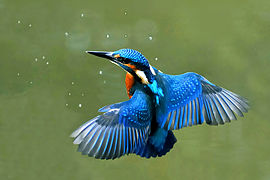



We talk about Aeroplanes, Ships, Bullet Trains making our life so fast and easily functioning. They are all inspired by our mother nature. Let’s take examples from our day to day life, designs of velcros, the shape of bullet trains, the smooth blades of wind turbines and what not, all these life changing ideas are inspired by nature. Believe it or not, engineers turn to nature to tackle some of the world’s biggest challenges. It wouldn’t be wrong to say that Biomimicry is the future.
By now you might be thinking what is Biomimicry? Biomimicry literally means the imitation of life. It is emulating nature’s time-tested patterns and strategies to seek sustainable solutions and solve human problems. In short, biomimicry is the process of taking the innovations that exist in nature and applying them to technology.
![]() Connecting “Senses” and “Sensing”: The gemstone for the next-gen smart sensors
Connecting “Senses” and “Sensing”: The gemstone for the next-gen smart sensors
Nature is full of mysteries and these mysteries have many incredible examples of functional materials. One of them is Structural colour -the production of colour by tiny structured surfaces which interfere with visible light, as found in butterfly wings or opal gemstones. Alike, peacock feathers have brown pigment, which reflect blue and green light. Influenced by them researchers have developed a colour-changing material which could be the ‘keystone’ of smart sensors in the near future.
In a study published by the journal “Advanced Functional Materials”, researchers have shown how to produce photonic crystals containing a minuscule amount of graphene resulting in many desirable qualities with outputs even observable by the naked eye. They are intensely green under natural light, but change to blue when stretched and become transparent when heated. This makes them an attractive source for visual sensing applications. This method represents a simple and inexpensive approach to produce multifunctional graphene infused synthetic opals. These crystals are excellent indicators for visual strain sensors or integrated time‐temperature. These flexible photonic crystals can even predict when an earthquake might strike next.




Few of its many potential applications are:
- Time-temperature indicators (TTI) : The sensors could be able to give visual indication of food or pharmaceuticals experiencing undesirable results.
- Bio-sensing Systems: The photonic crystals can be used as tissue scaffolds for understanding human biology and disease. If functionalized with biomolecules could act as highly sensitive point-of-care testing devices for respiratory viruses offering inexpensive, reliable, user-friendly biosensing systems.
- Safer Healthcare: A wrist band which changes colour, indicating patients if their health worker has washed hands before the examination. This property of sensors could help improve technique in sports players.
- Fingerprint Scanning: Results with high precision, well-defined ridges and shape-memory characteristics are attractive for biometric and anti-counterfeiting applications.
References:
- https://www.engineersireland.ie/Engineers-Journal/Technology/pretty-as-a-peacock-the-gemstone-for-the-next-generation-of-smart-sensor
- https://interestingengineering.com/biomimicry-9-ways-engineers-have-been-inspired-by-nature
- https://www.researchgate.net/publication/254906399_Nature_inspired_design_Strategies_towards_sustainability

